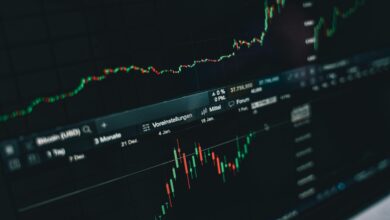Powering a Greener Future: The Transformative Role of Technology in Sustainable Energy and Practices

In an era marked by escalating concerns over climate change and environmental degradation, the urgency for sustainable solutions has never been greater. As societies grapple with the repercussions of traditional energy consumption, technology emerges as a beacon of hope, offering innovative pathways to a greener future. From harnessing the power of the sun and wind to leveraging the capabilities of artificial intelligence and the Internet of Things (IoT), technological advancements are not only transforming how we produce and consume energy but are also redefining our approach to sustainability as a whole. This article delves into the pivotal role of technology in driving the transition to renewable energy sources, exploring the groundbreaking innovations that are reshaping our energy landscape. We will examine how smart solutions powered by IoT and AI are enhancing sustainable practices across various industries, and look ahead to emerging technologies that promise to further propel us towards a cleaner, more sustainable tomorrow. Join us as we uncover the interconnected relationship between technology and sustainability, and how this synergy is laying the groundwork for a resilient planet.
- harnessing-innovation:-how-technology-is-revolutionizing-renewable-energy-sources“>
1. Harnessing Innovation: How Technology is Revolutionizing Renewable Energy Sources
In recent years, the intersection of technology and renewable energy has catalyzed a significant transformation in how we harness and utilize natural resources. Innovations across various sectors are redefining traditional energy paradigms, making renewable energy sources more efficient, accessible, and economically viable.
One of the most prominent advancements is in solar energy technology. The development of high-efficiency photovoltaic cells and concentrated solar power systems has drastically improved energy conversion rates. For instance, bifacial solar panels, which capture sunlight on both sides, have emerged as a game changer, allowing for increased energy production without requiring additional land. Moreover, innovations in energy storage solutions, such as advanced lithium-ion batteries and emerging solid-state technologies, are addressing the intermittency challenges associated with solar power, enabling more consistent energy supply even when the sun isn’t shining.
Wind energy has also seen remarkable improvements driven by technology. The introduction of larger, more efficient turbines has resulted in higher energy outputs while reducing the cost per megawatt-hour. Innovations such as digital twin technology allow for real-time monitoring and predictive maintenance of wind farms, enhancing operational efficiency and extending the lifespan of the equipment. Furthermore, floating wind farms are expanding the geographical range for wind energy capture, enabling offshore installations in deeper waters where wind resources are often more abundant.
Beyond solar and wind, advancements in bioenergy and geothermal technologies are also noteworthy. The integration of biotechnology in bioenergy production has led to the development of more efficient biofuels derived from waste materials, decreasing reliance on fossil fuels while simultaneously addressing waste management issues. In geothermal energy, enhanced geothermal systems (EGS) are being developed to tap into heat sources that were previously inaccessible, thus broadening the potential for geothermal energy beyond regions with traditional geothermal resources.
Furthermore, the role of digital technologies cannot be overstated. The rise of the Internet of Things (IoT), artificial intelligence (AI), and big data analytics is enabling smarter energy grids that can optimize energy distribution and consumption in real time. Smart meters provide consumers with insights into their energy usage patterns, empowering them to make informed decisions that reduce consumption and lower costs. Meanwhile, AI algorithms are being applied to improve the efficiency of energy production, predict demand fluctuations, and facilitate the integration of diverse renewable sources into the energy mix.
In summary, the relentless march of technological innovation is revolutionizing renewable energy sources, making them more efficient and cost-effective while addressing the pressing challenges of climate change. As these technologies continue to evolve, they promise to play a pivotal role in driving the global transition towards a sustainable and resilient energy future.
In recent years, technology has emerged as a pivotal force in advancing sustainability and promoting green energy solutions. The integration of innovative technologies into various sectors has not only enhanced efficiency but has also facilitated the transition towards a more sustainable future. Renewable energy sources, such as solar, wind, and hydroelectric power, have benefited immensely from technological advancements. For instance, improvements in solar panel efficiency and energy storage systems have made solar energy more accessible and viable for both residential and commercial use. Smart grids, powered by advanced data analytics and IoT (Internet of Things) devices, optimize energy distribution, reduce waste, and empower consumers to monitor and manage their energy consumption in real-time.
Moreover, technology plays a crucial role in the development and implementation of electric vehicles (EVs) and related infrastructure. Innovations in battery technology have significantly increased the range and affordability of EVs, encouraging widespread adoption and contributing to reduced greenhouse gas emissions in the transportation sector. Additionally, the rise of charging networks and smart charging solutions enables more convenient and efficient use of electric vehicles, further promoting sustainable mobility.
In agriculture, precision farming technologies harness data analytics, drones, and IoT devices to optimize resource usage, minimize waste, and reduce the environmental impact of food production. By monitoring soil health, weather patterns, and crop conditions in real-time, farmers can make informed decisions that enhance yield while conserving water and reducing chemical inputs.
Furthermore, the circular economy is gaining traction through technology-driven solutions that promote recycling, waste reduction, and sustainable manufacturing practices. Advanced materials science and 3D printing technologies enable the creation of products that are not only more efficient but also easier to recycle, helping to close the loop on resource use.
As we look to the future, the continued collaboration between technology and sustainability will be essential in addressing the pressing challenges of climate change. Governments, businesses, and individuals must embrace these innovations and invest in further research and development to harness technology's full potential in creating a greener, more sustainable world. Ultimately, the synergy between technology and sustainability offers a pathway not only to reduce our environmental footprint but also to foster economic growth and social equity in the transition to a low-carbon economy.





